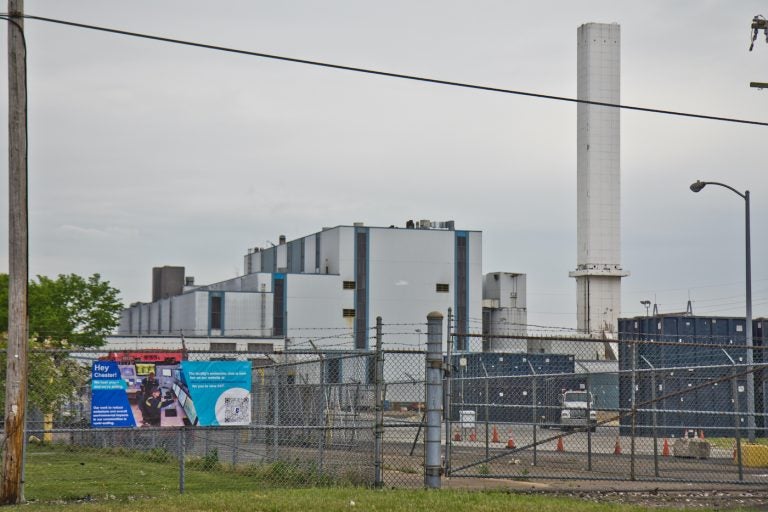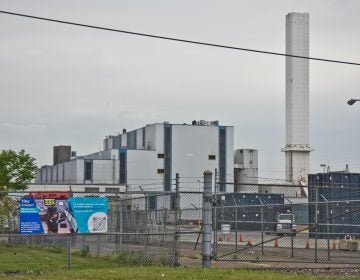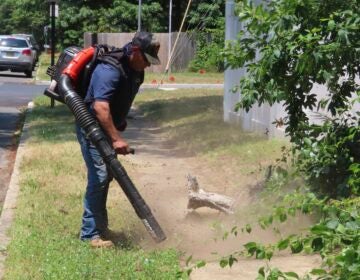Pa. strengthens air pollution standards for incinerators. How will this impact suburban air quality?
The new rules will cut pollution coming from the state’s six trash incinerators — including the ones in Bucks, Delaware, and Montgomery counties.

The Covanta incinerator, a waste-to-energy facility that burns trash from Delaware County, Philadelphia, New York City, in Chester, Pa. (Kimberly Paynter/WHYY)
The Pennsylvania Department of Environmental Protection recently adopted new regulations that will reduce air pollution coming from the state’s existing six trash incinerators.
Nitrogen oxide (NOx) contributes to the formation of ground-level ozone, also known as smog. At high enough concentrations, the gas can adversely affect public health and the environment.
The DEP is periodically required under the federal Clean Air Act to review whether large sources of NOx have sufficient pollution control technologies.
The previous state standard for NOx emissions was 180 parts per million on a daily average. The Clean Air Council and the Environmental Integrity Project, two organizations dedicated to strengthening environmental laws, felt that was too high.
While DEP sought to lower the standard to 150 parts per million on a daily average in August, the Clean Air Council and the Environmental Integrity Project submitted extensive technical comments, arguing emissions can be reduced even more.
“We actually pushed for something that was even lower than what the Pennsylvania Department of Environmental Protection ultimately set. We pushed for the standards that would be set for new incinerators, which was 45 parts per million on a daily average — but we also noted that it’s been shown that existing incinerators can meet 110 parts per million on a daily average,” said Leah Kelly, senior attorney with the Environmental Integrity Project.
In response to their comments, the DEP issued a new set of regulations on Nov. 12, setting a 110 parts per million limit on NOx emissions.
The organizations expect the rules to reduce NOx pollution in Pennsylvania by a total of about 1,500 tons per year — which includes emissions coming from the Wheelabrator Falls facility in Bucks County, Delaware Valley Resource Recovery Center in Delaware County, and the Covanta Plymouth Renewable Energy Facility in Montgomery County.
Chester residents have been trying to push the Covanta incinerator out of Chester for decades, citing environmental racism.
Kelly said these regulations are now among the strictest in the nation for existing incinerators. However, she wants the industry to “do better” at controlling other pollutants as well.
“It’s a step in the right direction. It’s certainly good to reduce pollution whenever that’s possible. It is not enough. More needs to be done to reduce pollution from incinerators. Incinerators are very toxic. They emit high levels of toxic pollutants like mercury, dioxin, and lead. And that’s not going to be addressed by this rule,” Kelly said.
The new regulations will take effect on Jan. 1, 2023.
WHYY is your source for fact-based, in-depth journalism and information. As a nonprofit organization, we rely on financial support from readers like you. Please give today.






